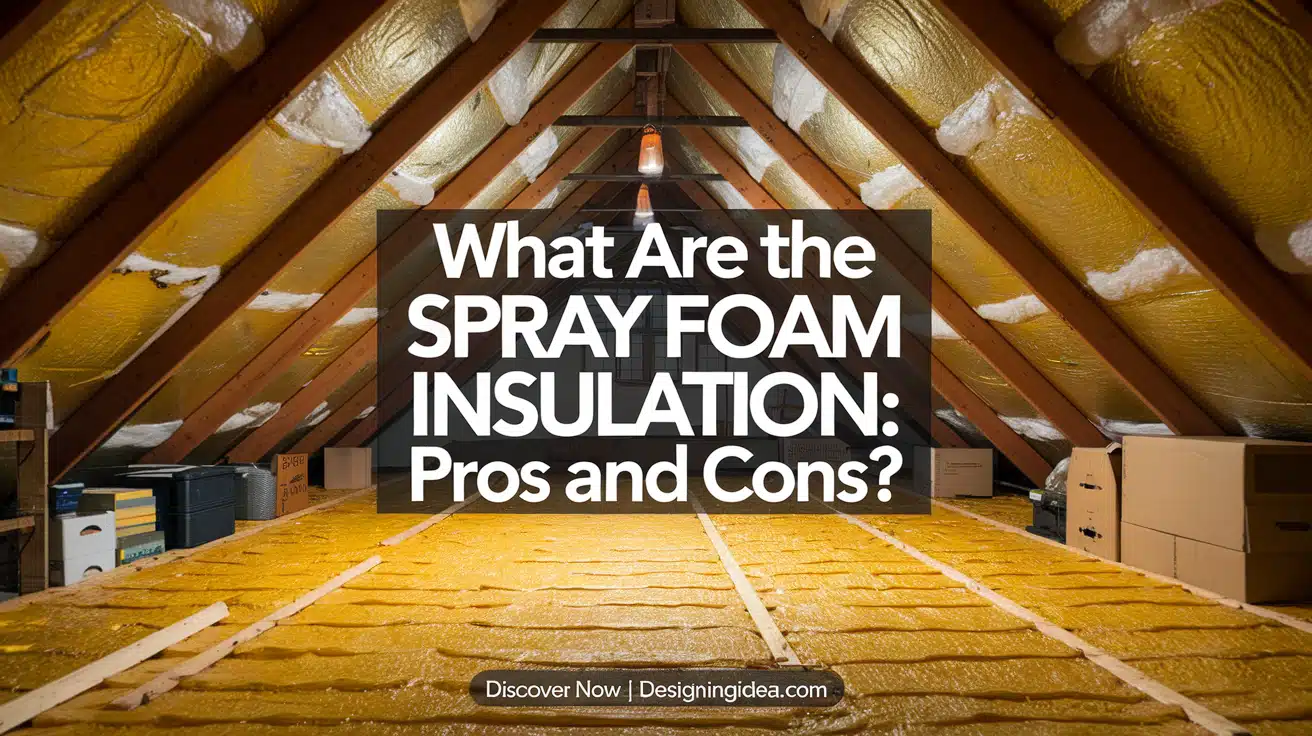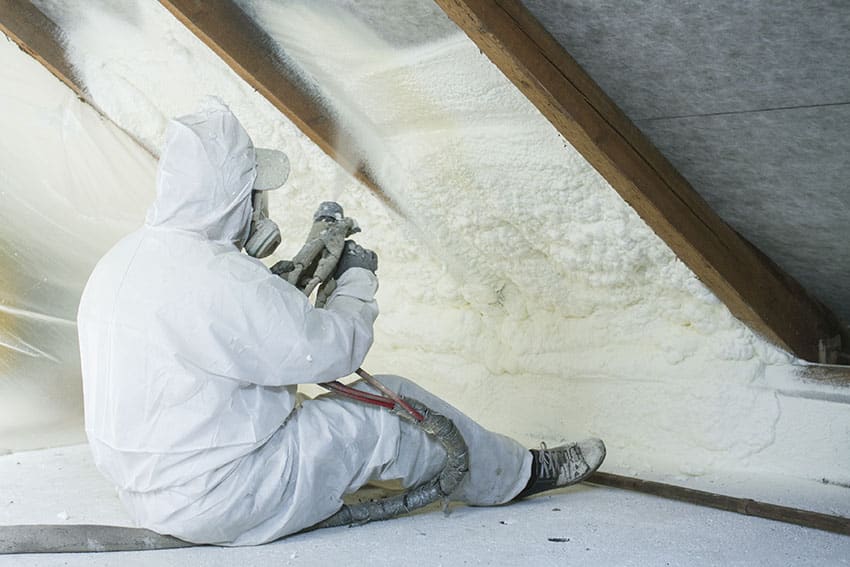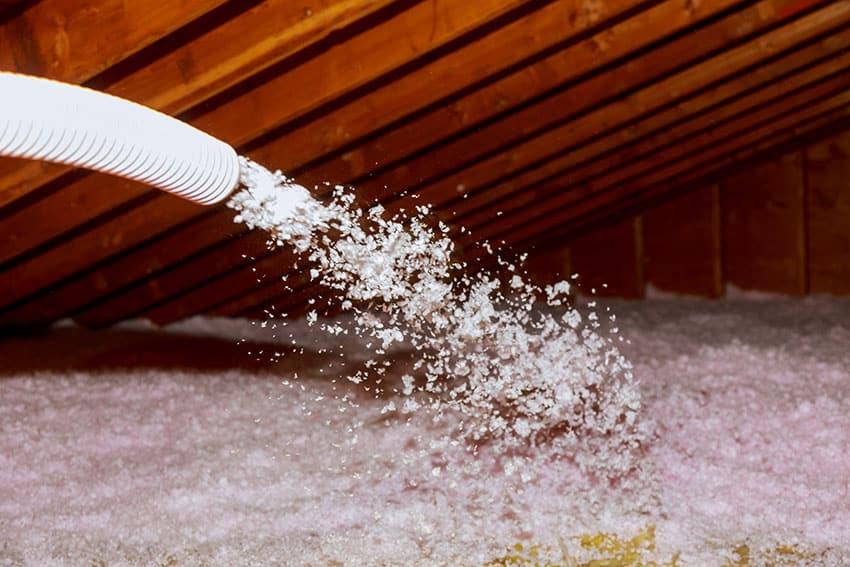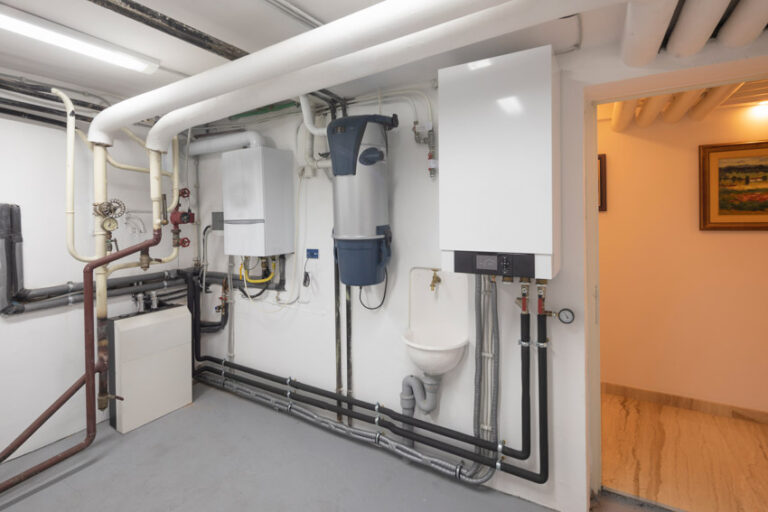What Are The Spray Foam Insulation Pros and Cons: Is It Worth It?

Building or renovating your dream home is a complex endeavor that can take a toll on your wallet. To reduce expenses, you can opt to install cost-effective features that still make for an efficient home. One of these features is the insulation system. There are several kinds of tried-and-tested home insulation materials you can choose from. In this article, we will focus on a widely used insulation material: spray foam.
What Is Spray Foam Insulation?
Spray foam is a thin film of ISO and resin mixture that expands when applied in the crevices of the wall, roof, and other cavities of your home that need filling. The foam molds between the gaps and crevices, creating a barrier against unwanted elements.
There are two types of spray foam insulation: closed-cell and open-cell. Closed-cell spray foam produces a solid foam, while an open-cell type takes on a softer and more pliable form. Either way, both do a good job of insulating your home. While spray foam is a popular insulator for residential properties, it’s essential that you understand the benefits and risks of using it.
Here we share our spray foam insulation pros and cons starting with the pros:
Pros
Spray foam insulation is popular for a reason: it’s multi-purpose and provides both short- and long-term benefits.
Regulates Indoor Temperature – Your HVACs work harder during summer and winter and thus result in a higher electricity bill. By using spray foam to seal gaps and air leaks, you create a barrier that prevents air from coming in or out of your home. In effect, the spray foam efficiently regulates the temperature inside. This, in turn, helps lower your electricity use by 35% to 50%. For this reason, spray foam insulation is superior compared to other traditional materials.
Prevents Bugs and Rodents – It’s not uncommon to encounter ants and bugs crawling inside your home. Chances are, there are holes and hidden crevices in your walls and ceiling that need blocking. Spray foam does an excellent job at filling these holes, even those in difficult-to-reach areas. The smell from the chemical components of spray foam helps deter bugs and rodents, too.
Provides Additional Structural Support – Spray foam is more durable than other insulators. When applied inside wall cavities, the solid foam doubles into strong interior support and increases your wall and ceiling structural integrity by up to 400%, according to the National Association of Home Builders.
Improved Sound Insulation – Spray foam has the added value of blocking out the noise coming from outside your home. Although this isn’t its intended purpose, spray foam can muffle the sounds passing through your walls. For proper soundproofing, though, go for noise reduction materials like MLV and acoustic tiles.

Cons of Spray Foam Insulation
Like other insulators, spray foam has its drawbacks. Consider the following factors below before committing to this product.
More Expensive Than Other Insulators – With its excellent benefits, spray foam insulation demands a high price. Aside from the materials, variables like the size of your project, the condition of your house, and the cost of labor dictate the price of this method. But on average, expect to shell out between $1.50 and $4.90 per square foot. For comparison, fiberglass costs $0.30 to $1.50 per square foot.
Highly Flammable – Some types of spray foam are highly combustible, so it’s best to not install these products in places where there are chances for ignition. Some other types are treated with flame retardants to help them be more fire resistant. Building codes often require that spray foam insulation be covered with a thermal barrier, such as drywall. If unsure, refer to the mandated building codes and regulations for your family’s safety and yours. [source]
Requires A Professional To Install – Unless you have experience in installing spray foam insulation, hire a team of professionals to do the job instead. Spray foam consists of a combination of chemicals, so mishandling it can be a hazard. Applying it requires proper knowledge, skills, and equipment to achieve the desired results. Not to mention, there are regulations to follow. Without these, you may risk damage not only to your home but to your health as well.
What Can Go Wrong with This Insulation?

This wonderful insulator is far from being fail-proof. You need to consult with a professional and understand the goals of your project before starting. The timing and prepping of your project are also crucial. Installing spray foam when the temperature is too hot or too cold, the humidity level is too high, or the surface is moist or wet will prevent the foam from curing.
You must also be wary of committing the following mistakes.
• Applying the wrong foam thickness provides for poor thermal insulation.
• A bad batch of the chemical mixture results in less adhesion and outgassing, or the release of gas from harmful chemicals that may induce dizziness and breathing problems.
• Not removing old insulation before installing a new one creates double insulation. When this occurs, the insulation won’t function well as it increases moisture.
• Interchanging the use of open-cell and closed-cell spray foams may not only be ineffective but also damage some parts of your home.
Is This Insulation Worth It?

Spray foam insulation is undoubtedly a hefty investment, so it may not be for everyone. But if your goal is to build an energy-efficient and extra cozy home, then spray foam can save you a lot of money in the long run. Put your mind at ease by properly vetting your contractors. It is also wise to secure insurance on their work before confirming the project.
When Should You Not Use Spray Foam Insulation?
Because of the spray foam’s characteristics, many have found creative uses for it. Some use it as an adhesive for arts and crafts projects. Others make homemade coolers out of it while some use it to insulate noise from aluminum sinks. Although a versatile insulation material, below are instances of when you should not use spray foam:
• Certain types of spray foam are a fire hazard and should be nowhere near an electrical source or inside a fireplace.
• Don’t use spray foam past its expiration date as it may not insulate well, or worse, the can could explode.
• Do not install spray foam insulation if you have no proper ventilation system in place. The ventilation helps fresh air to move around for healthier air quality.
• Spray foam can keep outside allergens in the air from entering your home. But if you have respiratory conditions, think twice before using spray foam as it may aggravate your illness.
Keep in mind that even the DIY-friendly canned spray foams require safety equipment and professional guidance before use.
What do you think of these spray foam insulation pros and cons? Is there anything we missed, if so let us know in the comments below. For more related content, read this article on basement ceiling insulation.






